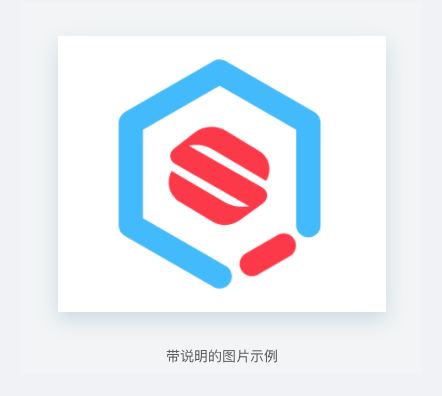# 新增业务组件
对于一些可能被多处引用的功能模块,建议提炼成业务组件统一管理。这些组件一般有以下特征:
- 只负责一块相对独立,稳定的功能;
- 没有单独的路由配置;
- 可能是纯静态的,也可能包含自己的 state,但不涉及 dva 的数据流,仅受父组件(通常是一个页面)传递的参数控制。
下面以一个简单的静态组件为例进行介绍。假设你的应用中经常需要展现图片,这些图片宽度固定,有一个灰色的背景和一定的内边距,有文字介绍,就像下图这样:

你可以用一个组件来实现这一功能,它有默认的样式,同时可以接收父组件传递的参数进行展示。
# 新建文件
在 src/components 下新建一个以组件名命名的文件夹,注意首字母大写,命名尽量体现组件的功能,这里就叫 ImageWrapper。在此文件夹下新增 san 文件及样式文件(如果需要),命名为 index.san 和 index.less。
你的代码大概是这个样子:
<template>
<div class="imageWrapper">
<img class="img" src="{{src}}">
{{desc}}
</div>
</template>
<script>
export default {
initData() {
return {
// ...
}
}
}
</script>
<style lang="less" scoped>
.imageWrapper {
padding: 0 20px 8px;
background: #f2f4f5;
width: 400px;
margin: 0 auto;
text-align: center;
}
.img {
vertical-align: middle;
max-width: calc(100% - 32px);
margin: 2.4em 1em;
box-shadow: 0 8px 20px rgba(143, 168, 191, 0.35);
}
</style>
到这儿组件就建好了。
# 使用
在要使用这个组件的地方,按照组件定义的 API 传入参数,直接使用就好,不过别忘了先引入:
<template>
<div>
<image-wrapper src="图片路径" desc="这是一段描述"></image-wrapper>
</div>
</template>
<script>
import ImageWrapper from '@/components/ImageWrapper'; // @ 表示相对于源文件根目录
export default {
components: {
'image-wrapper': ImageWrapper
}
}
</script>
<style lang="less" scoped>
</style>